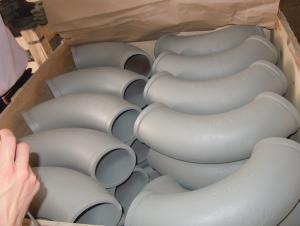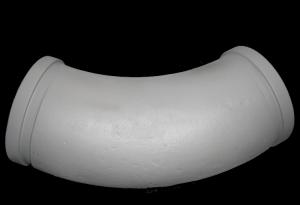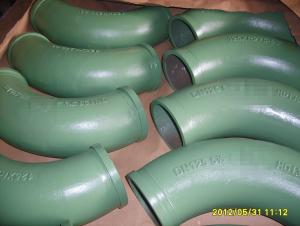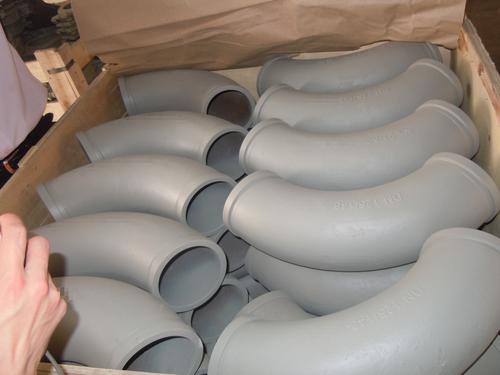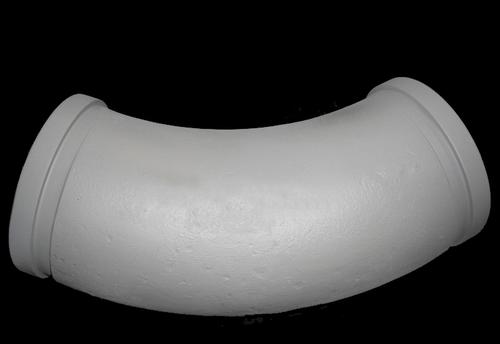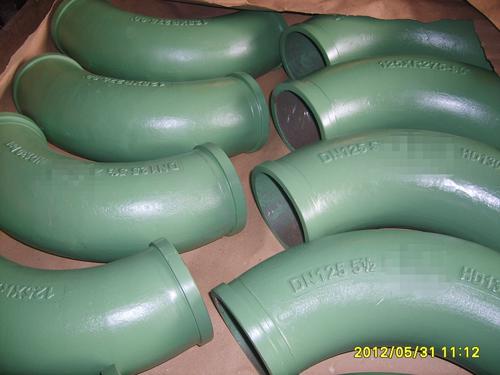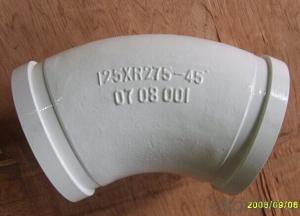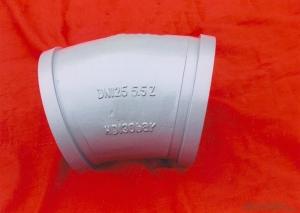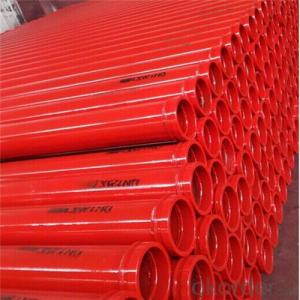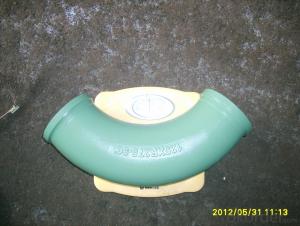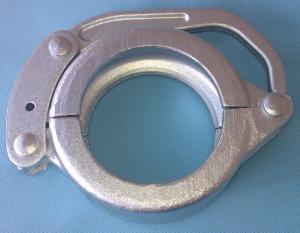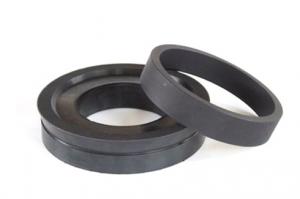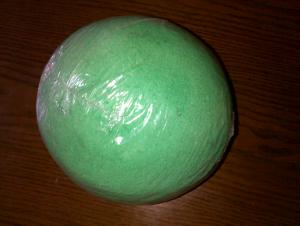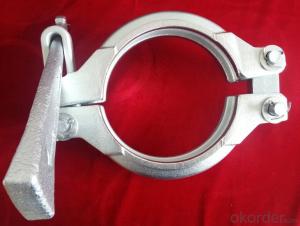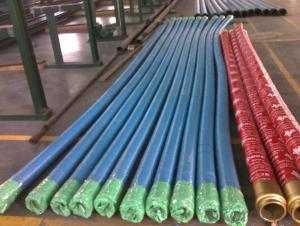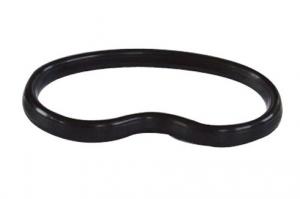Concrete Pump Truck Parts Elbow Bend R275 DN125 148Flange 90DGR Casting
- Loading Port:
- China Main Port
- Payment Terms:
- TT OR LC
- Min Order Qty:
- -
- Supply Capability:
- -
OKorder Service Pledge
Quality Product, Order Online Tracking, Timely Delivery
OKorder Financial Service
Credit Rating, Credit Services, Credit Purchasing
You Might Also Like
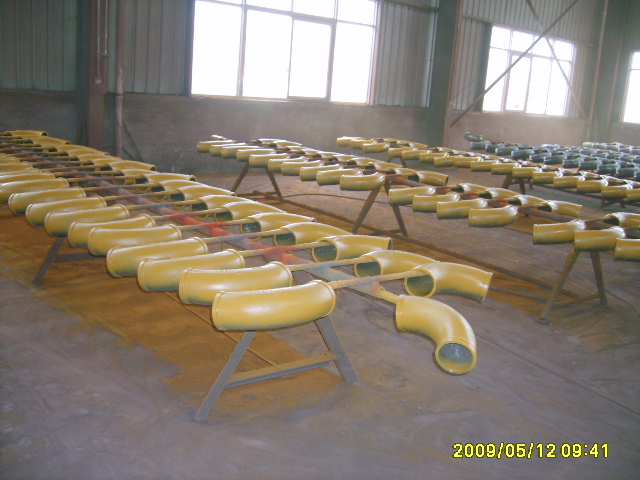
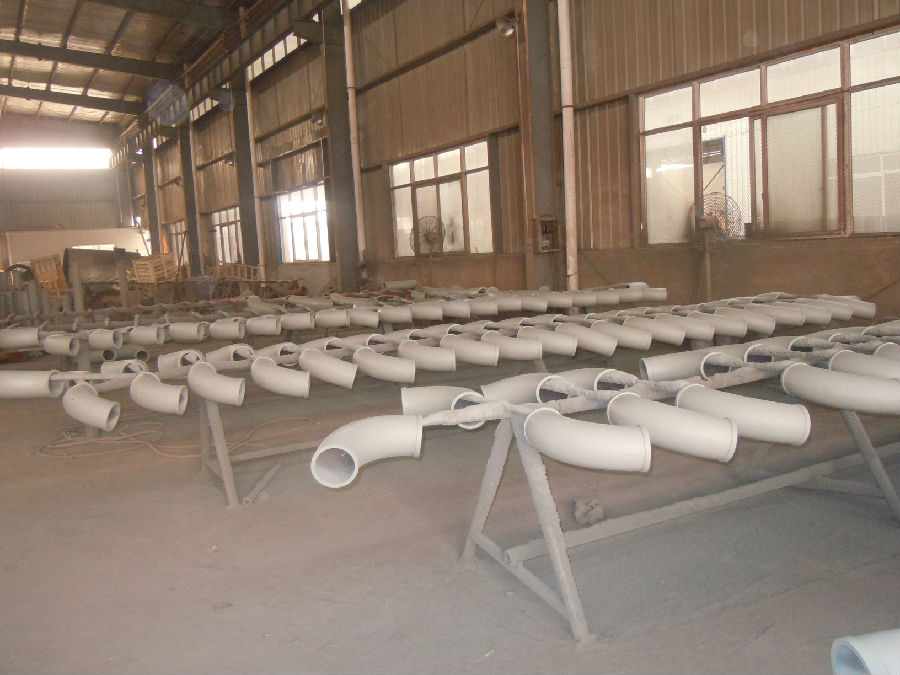
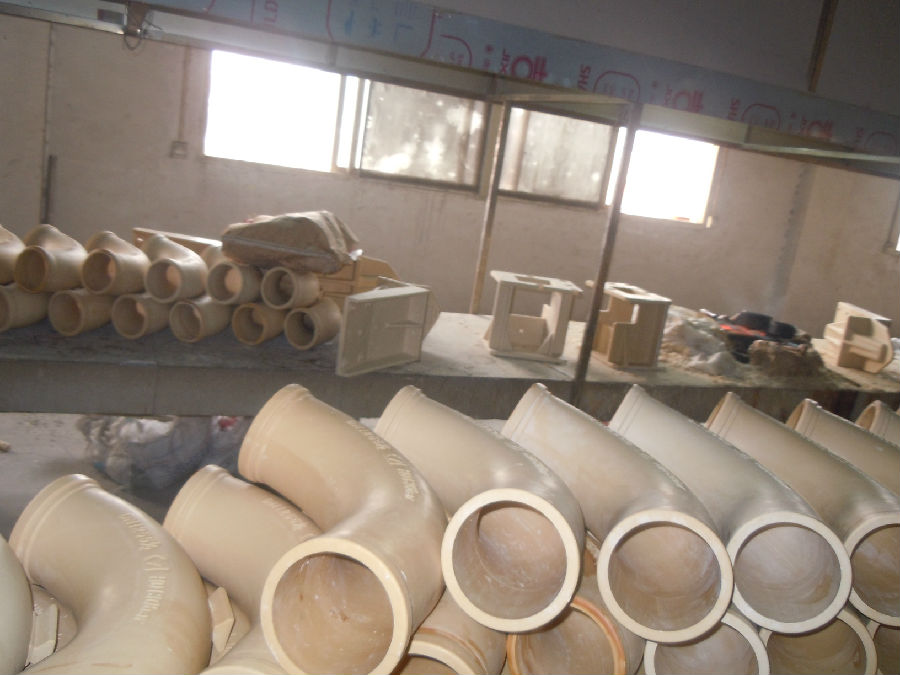
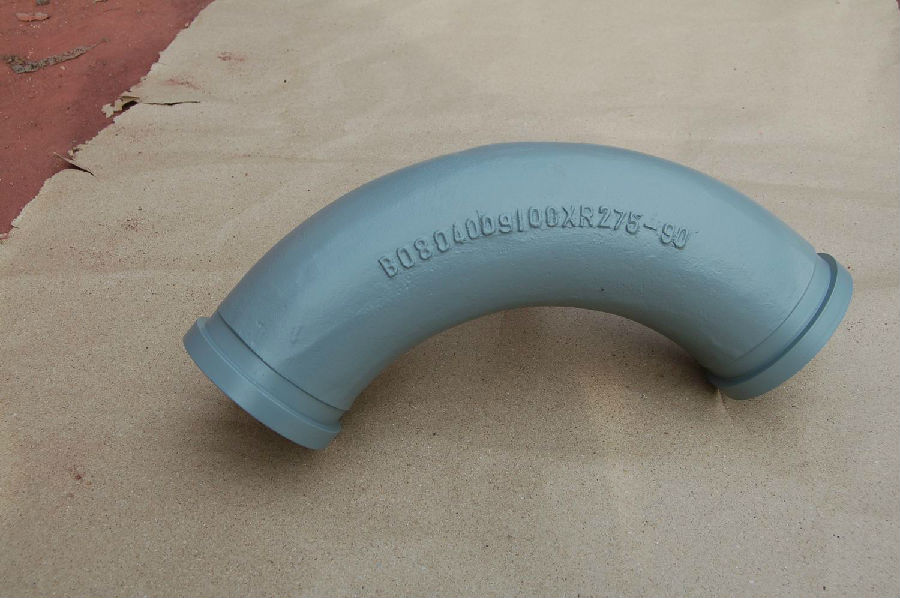

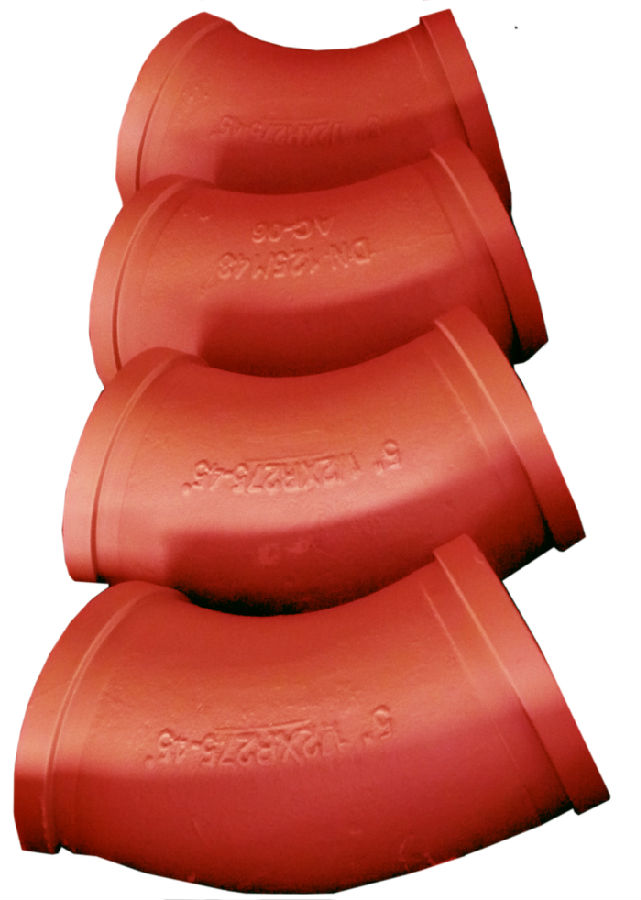
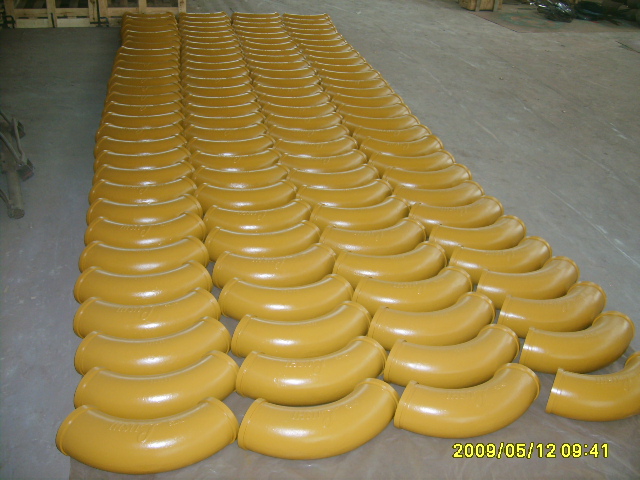
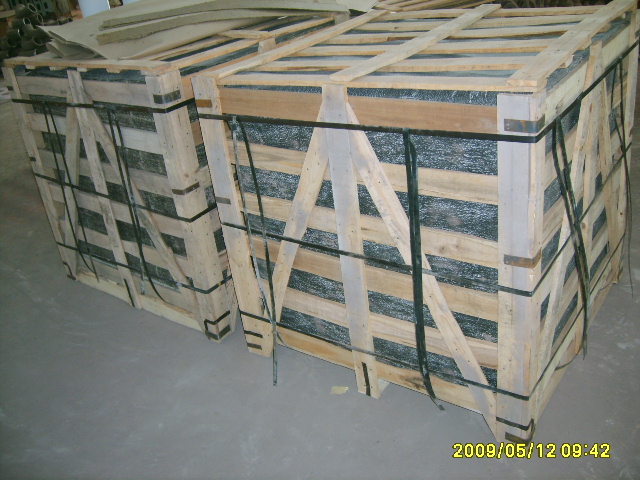
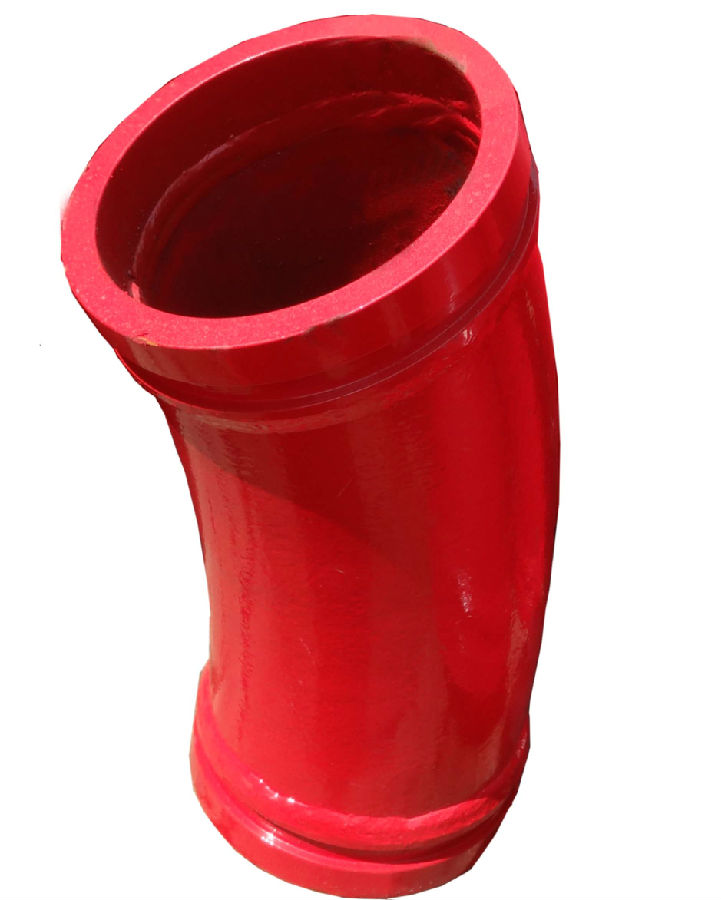
- Q: How can a faulty gearbox affect the pump's performance?
- A faulty gearbox can significantly impact the performance of a pump. The gearbox is responsible for transmitting power from the motor to the pump, and any dysfunction in this component can lead to various issues. Firstly, a faulty gearbox can cause a decrease in the pump's efficiency. The gearbox is designed to regulate the speed and torque of the pump, ensuring that it operates at optimal levels. If the gearbox is faulty, it may not be able to provide the necessary power to the pump, resulting in reduced performance and lower efficiency. This can lead to increased energy consumption and decreased overall productivity. Additionally, a faulty gearbox can cause the pump to experience excessive vibration and noise. A properly functioning gearbox helps to absorb and distribute the forces generated during operation, reducing vibration and noise levels. However, if the gearbox is faulty, it may fail to dampen these forces adequately, resulting in increased vibrations and noise. This can not only affect the pump's performance but also lead to premature wear and tear of other components, further impacting its overall efficiency. Furthermore, a faulty gearbox can result in inconsistent flow rates and pressure fluctuations. The gearbox plays a crucial role in controlling the speed and output of the pump. If the gearbox is malfunctioning, it may not be able to maintain a consistent flow rate or pressure, leading to fluctuations in the pump's performance. Inconsistent flow rates can disrupt processes that rely on precise volumes or pressures, causing inefficiencies and potential damage to downstream equipment. In conclusion, a faulty gearbox can have a detrimental effect on the performance of a pump. It can lead to decreased efficiency, increased vibrations and noise, as well as inconsistent flow rates and pressure fluctuations. Therefore, regular maintenance and prompt repair or replacement of faulty gearboxes are essential to ensure the optimal functioning of pumps and prevent any further damage or operational issues.
- Q: How to diagnose the blockage in the inlet of concrete pump?
- The feed port is blocked and the pump operation and hydraulic system are normal, with no abnormal sound and vibration. The hopper has larger aggregate or agglomerates and is stuck or arched at the feed port
- Q: What are the different types of concrete pump hopper agitator blades?
- In the construction industry, there exists a variety of concrete pump hopper agitator blades. These blades have different designs and functions, all aimed at efficiently mixing and agitating the concrete mixture in the hopper. By achieving a consistent and homogeneous mixture, the concrete can be pumped onto the project site effectively. 1. Paddle Blades: The most commonly used agitator blades in concrete pump hoppers are paddle blades. These blades have a flat, paddle-like design that effectively mixes the concrete ingredients. They are typically made of high-quality steel or hardened rubber to ensure durability and optimal performance. 2. Helical Blades: Another type of agitator blade is the helical blade, which has a spiral shape. This design creates a gentle, swirling motion within the hopper, preventing the formation of lumps and ensuring a smooth and well-mixed concrete mixture. 3. Ribbon Blades: Thin and flat, ribbon blades resemble ribbons and are placed vertically in the hopper. They rotate along their axis to thoroughly mix the concrete ingredients. Ribbon blades are known for their ability to prevent clogging and improve the efficiency of concrete pumping. 4. Fan Blades: With a unique fan-shaped design, fan blades create a powerful airflow within the hopper to agitate the concrete mixture. This type of blade is particularly effective in preventing the segregation of concrete ingredients and maintaining a consistent mixture. 5. Tine Blades: Tine blades feature multiple prongs or tines extending from a central hub. They provide a more aggressive agitation action, making them suitable for mixing heavier concrete mixes or those containing large aggregates. The selection of agitator blades depends on various factors, such as the type of concrete, desired consistency, and specific project requirements. It is crucial to choose the appropriate blade type and perform regular maintenance to optimize the performance and lifespan of the concrete pump hopper agitator.
- Q: How does a hopper vibrator prevent concrete blockages?
- A hopper vibrator is a mechanical device designed to prevent concrete blockages in construction equipment, such as concrete pumps and mixers. It works by applying vibrations to the hopper, which is the large container where the concrete is stored before it is poured or transferred. The main reason concrete blockages occur is due to the tendency of the material to settle and become compacted, especially when it is stored for a long time or during transportation. This can lead to clogging and obstruction of the flow of concrete, slowing down the construction process and potentially causing damage to the equipment. By using a hopper vibrator, the vibrations are transmitted to the concrete within the hopper, effectively preventing it from settling and compacting. The vibrations create a loosening effect on the concrete particles, ensuring that they remain in a more fluid state. This allows for a continuous and smooth flow of concrete, preventing any blockages or obstructions from occurring. Additionally, the vibrations from the hopper vibrator also help to dislodge any potential blockages that may have already formed. The shaking motion can break up clumps of concrete or other debris that might be blocking the flow, allowing for uninterrupted movement of the material. Overall, a hopper vibrator is an essential tool in construction equipment as it helps to maintain a consistent flow of concrete, preventing blockages and ensuring the smooth and efficient operation of the construction process.
- Q: What is the purpose of a concrete pump boom?
- The purpose of a concrete pump boom is to provide an efficient and effective method for transferring concrete from the mixer truck to the desired location on a construction site. The boom is typically mounted on a truck or trailer and consists of a series of connected sections that can be extended and maneuvered to reach areas that are otherwise difficult to access. Concrete pump booms offer several advantages over traditional methods of concrete placement. Firstly, they significantly reduce the labor required for concrete placement, as the boom can reach over obstacles such as buildings or other structures, eliminating the need for manual pouring or the use of cranes. This saves time and money on a construction project. Additionally, concrete pump booms allow for precise and accurate placement of concrete. The boom can be controlled remotely, allowing the operator to position the nozzle exactly where the concrete is needed. This ensures a more uniform and even distribution of concrete, resulting in a higher quality finished product. Furthermore, concrete pump booms increase safety on construction sites. By eliminating the need for workers to physically transport and pour concrete, the risk of injuries and accidents is significantly reduced. The boom also allows for the placement of concrete in hard-to-reach areas, minimizing the need for workers to climb or work at heights, further enhancing safety. In conclusion, the purpose of a concrete pump boom is to provide a more efficient, precise, and safe method for transferring and placing concrete on construction sites. Its ability to reach over obstacles, accurately control placement, and reduce labor requirements make it an invaluable tool in the construction industry.
- Q: How can one determine the correct size and dimensions of concrete pump spare parts?
- To determine the correct size and dimensions of concrete pump spare parts, there are several important steps to follow: 1. Identify the specific make and model of your concrete pump: Each concrete pump has its own unique specifications and requirements for spare parts. Therefore, it is crucial to know the make and model of your pump before ordering any spare parts. 2. Consult the manufacturer's documentation: Manufacturers often provide detailed documentation that includes information on the required size and dimensions of spare parts. This documentation may include technical drawings, diagrams, and part numbers that can help you find the correct size. 3. Measure the existing spare part: If you already have a spare part that needs replacement, you can measure its size and dimensions using precision tools like calipers or a measuring tape. Take accurate measurements of key dimensions such as length, width, height, and any other relevant specifications. 4. Seek professional assistance: If you are unsure about the correct size and dimensions, it is advisable to consult with a professional or an authorized dealer. They have expertise in concrete pumps and can guide you in selecting the right spare parts based on your pump's specifications. 5. Consider compatibility and quality: When purchasing spare parts, ensure they are compatible with your concrete pump's make and model. Additionally, prioritize quality to ensure longevity and optimal performance. Buying from reputable suppliers or directly from the manufacturer can help ensure the spare parts meet the necessary size, dimensions, and quality standards. By following these steps, you can accurately determine the correct size and dimensions of concrete pump spare parts, ensuring smooth operation and minimizing downtime.
- Q: How often should hopper pins be inspected or replaced in a concrete pump?
- Hopper pins in a concrete pump should be inspected regularly, preferably before each use, to ensure they are in proper working condition. The frequency of replacement will depend on various factors such as the quality of the pins, the intensity of use, and the maintenance practices employed. However, it is recommended to replace hopper pins as soon as any signs of wear, damage, or weakening are detected to prevent potential accidents or malfunctions.
- Q: Can concrete pump spare parts be purchased online?
- Indeed, online purchases of concrete pump spare parts are possible. Numerous online platforms and websites cater specifically to the sale of construction equipment and spare parts, including those for concrete pumps. These digital stores present a comprehensive assortment of options and brands, enabling customers to peruse and choose the precise spare parts required for their concrete pump. Moreover, online buying grants the convenience of price comparison, perusal of customer reviews, and doorstep delivery of the spare parts. Nevertheless, it remains imperative to ascertain the authenticity and dependability of the online store prior to making a purchase, guaranteeing the acquisition of genuine and top-notch spare parts.
- Q: If the concrete pump valve jam how to judge and deal with?
- The method of hammering with a wooden hammer can be combined with a positive and reverse pump to make it clear; when the above method is invalid, the obstruction is serious
- Q: Are there any warranties or guarantees on concrete pump spare parts?
- Yes, there are warranties and guarantees offered on concrete pump spare parts. Many manufacturers and suppliers provide warranties on their products to ensure the quality and performance of the spare parts. These warranties may vary in duration and coverage depending on the specific supplier or manufacturer. It is important to check with the supplier or manufacturer to understand the terms and conditions of the warranty or guarantee before purchasing the concrete pump spare parts. Additionally, some suppliers may also offer extended warranties or guarantees for an additional cost, providing further peace of mind to the customers.
Send your message to us
Concrete Pump Truck Parts Elbow Bend R275 DN125 148Flange 90DGR Casting
- Loading Port:
- China Main Port
- Payment Terms:
- TT OR LC
- Min Order Qty:
- -
- Supply Capability:
- -
OKorder Service Pledge
Quality Product, Order Online Tracking, Timely Delivery
OKorder Financial Service
Credit Rating, Credit Services, Credit Purchasing
Similar products
Hot products
Hot Searches
Related keywords
